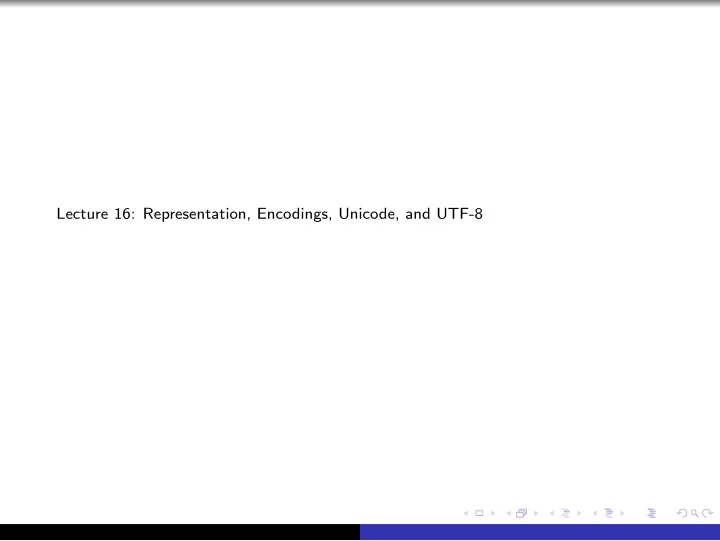

Lecture 16: Representation, Encodings, Unicode, and UTF-8
Binary Numbers The polynomial expansion of 362 is 362 = 3 × 10 2 + 6 × 10 1 + 2 × 10 0 Binary numbers work in exactly the same way, but with powers of 2 instead of powers of 10. So the number 00100101 = 2 5 + 2 2 + 2 0 = 37 .
Writing Data to Disk Imagine that we write a small amount of textual data to file a file called output.txt using the following Python code. 1 with open (’output.txt’, ’wt’, encoding=’ASCII’) as fout: 2 print (”De La Soul is Dead”, file =fout, ) If we cat the file in unix we see $ cat output.txt De La Soul is Dead $ xxd -b output.txt 0000000: 01000100 01100101 00100000 01001100 01100001 00100000 De La 0000006: 01010011 01101111 01110101 01101100 00100000 01101001 Soul i 000000c: 01110011 00100000 01000100 01100101 01100001 01100100 s Dead 0000012: 00001010 .
ASCII TABLE
U+2B50 WHITE MEDIUM STAR
UTF-8 Bits in code pt First code pt Last code pt # Bytes Byte 1 Byte 2 Byte 3 Byte 4 7 U+0000 U+007F 1 0xxxxxxx 11 U+0080 U+07FF 2 110xxxxx 10xxxxxx 16 U+0800 U+FFFF 3 1110xxxx 10xxxxxx 10xxxxxx 21 U+10000 U+1FFFFF 4 11110xxx 10xxxxxx 10xxxxxx 10xxxxxx Here are several advantages of UTF-8. UTF-8 is compatible with ASCII because it encodes all ASCII characters as ASCII values; UTF-8 can encode all the unicode code points; and UTF-8 is self-synchronizing—one can use the byte signatures to both determine the number of bytes and the order of the bytes.
Recommend
More recommend